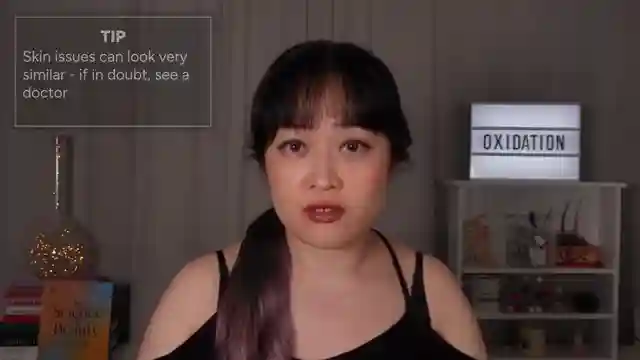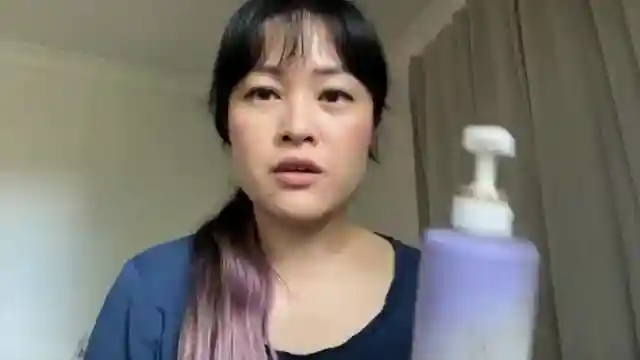Ultimate Body Care Tips: Combat KP, Dark Spots, and Retinol Safely

- Authors
- Published on
- Published on
In this riveting episode of Lab Muffin Beauty Science, Michelle, the skincare virtuoso, delves into the uncharted waters of body care with the fervor of a seasoned explorer. She unveils groundbreaking tips on combating keratosis pilaris (KP) and ingrown hairs, advocating for the transformative power of exfoliation and the miraculous effects of a urea-infused heel balm. Michelle's arsenal includes the legendary Paula's Choice 2% BHA liquid and the Weightless Body Treatment, proving that skincare prowess knows no bounds.
With the finesse of a maestro, Michelle introduces viewers to the Topicals High Roller, a potent elixir enriched with glycolic and salicylic acid, designed to target specific skin areas with surgical precision. She champions the art of physical exfoliation using a Turkish mitt, a ritual that not only banishes dead skin but also safeguards against the dreaded folliculitis. The Supernova Body Smooth Operator and ZitSticka Fizz Fountain emerge as formidable contenders in the battle against skin imperfections, harnessing the power of salicylic acid to deliver flawless results.
As the episode unfolds, Michelle unveils the KP Bump Eraser from First Aid Beauty and the Alpha-H Retinol Reboot Exfoliating Body Treatment, two titans in the realm of dark spot obliteration. She fearlessly navigates the murky waters of retinol usage on the body, challenging conventional norms and shedding light on the EU regulations governing its application. With a blend of expertise and audacity, Michelle implores viewers to embrace consistency in their skincare routines and seek expert advice for skin conditions, ensuring a path to radiant and flawless skin.

Image copyright Youtube

Image copyright Youtube

Image copyright Youtube

Image copyright Youtube
Watch Science-based body care hacks: KP, breakouts, dark marks on Youtube
Viewer Reactions for Science-based body care hacks: KP, breakouts, dark marks
Comment on the quality of older videos and appreciation for educational content
Request for a video on product shelf life and expiration dates
Positive feedback on Olay Retinol lotion for keratosis pilaris
Discussion on the use of hypochlorous acid for wound care and skin conditions
Recommendation for using white vinegar in laundry for skin benefits
Use of Eucerin Roughness Relief for keratosis pilaris
Recommendation for Bioderma oil wash for skin care
Tips for cleaning washing machines for skin health
Personal experience with laundry sanitizer for skin abscesses
Discussion on causes of folliculitis and cleaning washing machines
Related Articles

Top Viral Skincare Products Reviewed: Exfoliation, Makeup Removal, and Soothing Hydration
Lab Muffin Beauty Science reviews viral skincare products from Stylevana, featuring innovative ingredients like sponge spicules and fermented centella extract. Discover top picks for gentle exfoliation, effective makeup removal, and soothing hydration, all tested for safety and reliability.

Sunscreen Secrets: Harmful Ingredients, DIY Alternatives, and Sun Protection Tips
Lab Muffin Beauty Science exposes harmful sunscreen ingredients and advocates for DIY alternatives. Experts discuss the importance of lifestyle sun protection strategies and debunk myths about antioxidant supplements. They recommend mineral sunscreens with non-nano zinc oxide while providing evidence-backed options like tomatoes and leafy greens for enhanced sun protection.

Skincare Innovations: Red Light Masks, Spicules, and Vitamin C Updates
Lab Muffin Beauty Science explores skincare innovations like iRestore's red light mask, spicules in VT Reedle shot, and updates on vitamin C formulas. Discover the latest trends and safety considerations in skincare technology.

Unlocking Hair Protection: Receipt Experiment Reveals Product Efficacy
Lab Muffin Beauty Science tests heat protectants on receipts to determine effectiveness. Water, alcohol, and surfactants impact color changes, revealing insights into product efficacy for hair health.
